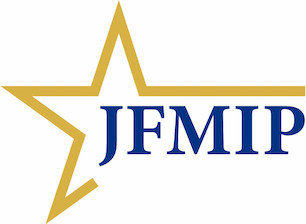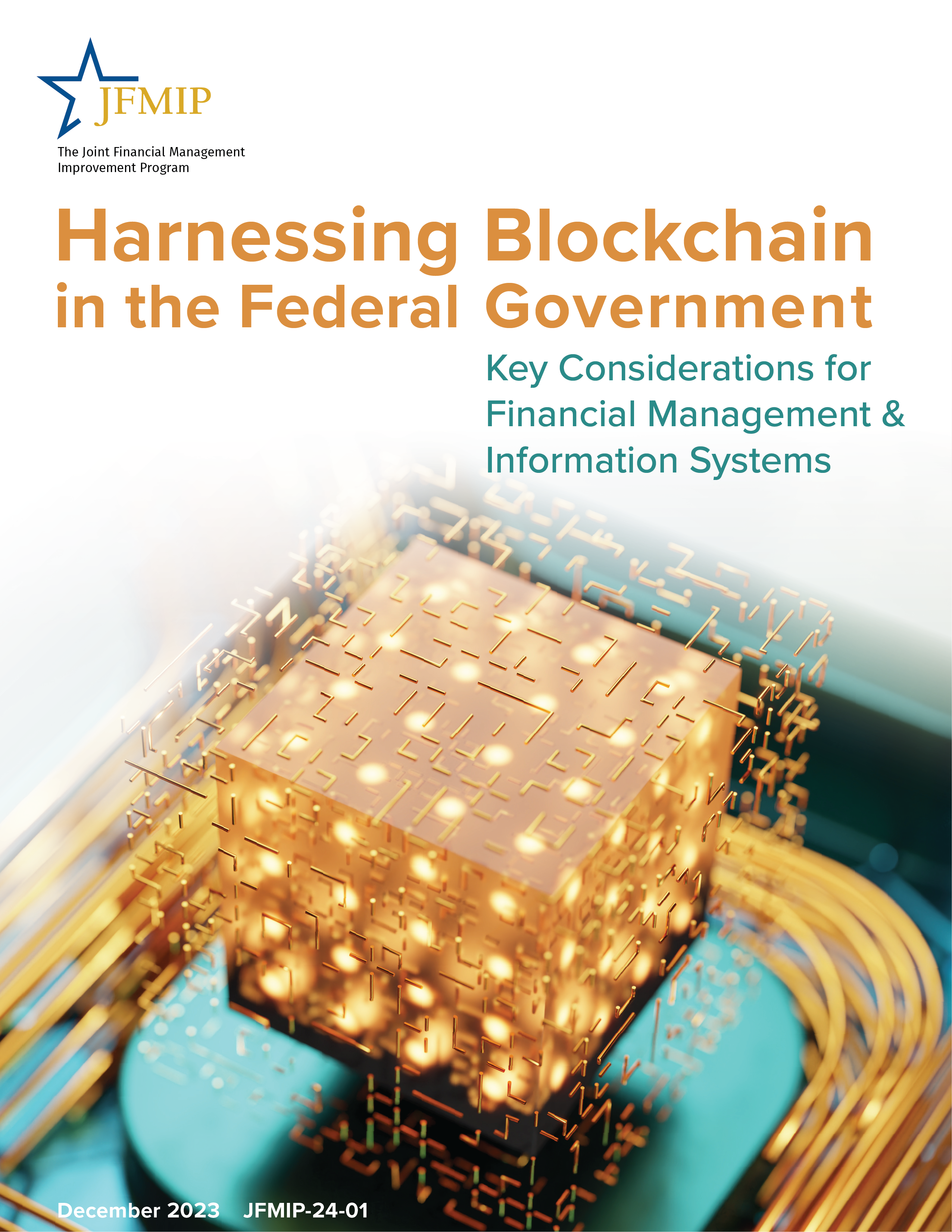JFMIP Blockchain Initiative
Overview
Blockchain has captured a steady stream of headlines in recent years, along with its related topics such as cryptocurrencies, non-fungible tokens, and smart contracts. The core concept of a blockchain is grounded in the idea of decentralization and independent checks wherein multiple nodes in a network validate each transaction, ensuring greater transparency and data integrity. Using blockchain in federal financial management offers potential opportunities for efficiencies, transparency, workforce flexibility, and data integrity. However, blockchain technology is still in an early stage of evolution for business uses, and clarity is needed on its use in the federal government.
In August 2021, the JFMIP began an initiative to examine key factors of blockchain across two agencies to better understand government-wide considerations for this technology. Utilizing a blockchain prototype already built by Fiscal Service in 2019, the JFMIP initiative expanded the prototype’s architecture across agency boundaries to GAO. The initiative consisted of two objectives:
- Explore information technology considerations for a potential multi-agency blockchain, including cybersecurity, authority-to-operate, and operational factors, and
- Explore potential federal financial management, human capital, and oversight efficiencies and challenges for blockchain.
Results
The JFMIP concluded this initiative in December 2023 with the publication of its report - Harnessing Blockchain in the Federal Government: Key Considerations for Financial Management and Information Systems.
The report presents the JFMIP's experience in expanding Fiscal Service’s grants financial management blockchain prototype across agency boundaries to GAO. Additionally, this report captures insights provided by public and private sector experts, as well as our analysis of academic research, related to blockchain’s potential impacts on federal financial management, human capital, and oversight. However, the JFMIP did not create an exhaustive list of considerations for blockchain, or prescribe an optimal framework to approach assessing blockchain’s use at any particular agency or office. The JFMIP envisions this document as a learning tool for the federal financial management community in preparing for a future when blockchain is in use.
We discuss the design, development, and deployment of the prototype, going into detail on the use of service providers for the platform and application server. Additionally, we discuss several IT considerations including user interface, cybersecurity, network reliability, and cloud computing, based on our experience. For example, using a blockchain that is hosted in the cloud may provide more network reliability and some cost savings, but may limit agencies’ flexibility if they are locked into long term contracts with vendors.
Following discussions of the prototype and IT considerations, we offer factors that agency financial managers may want to consider in using blockchain for financial management. For example, we discuss the potential for increased transparency offered by blockchain’s real-time data, and a potential reduction in the reconciliation burden many agencies currently encounter with their various financial systems. We further discuss potential accounting impacts of one integrated, validated data source where all financial applications work in concert. However, we also discuss the potentially complex coordination involved in standing up a multi-agency blockchain. This would also involve coordination in the Authority to Operate process, which could be especially complex with blockchains in light of IT and cybersecurity risks.
In addition to providing considerations for financial managers, JFMIP analyzed the potential impact on current and future human capital needs of the federal government resulting from both this blockchain prototype and the emergence of blockchain technologies generally. The human capital business process encompasses five stages: plan, implement, evaluate, inform, and improve. Blockchain has potential implications for each of these five stages, and we discuss what those impacts might be in the future.
We also discuss the potential implications of blockchain technology and read-only nodes on oversight, to include the work performed by auditors. Read-only nodes offer auditors access to all transactional data saved on a blockchain, without impacting the business processes occurring on the blockchain. This may provide efficiencies for auditors and others providing oversight. However, audit standards and related methodologies establish procedures for understanding and assessing the controls around information systems, as well as procedures for attaining a level of assurance over financial statement assertions. The complexity and unique nature of blockchains may present challenges when following these methodologies.
We hope this report offers a helpful summary of our collaborative project and provides key considerations for other organizations looking into blockchain solutions for financial management.
For more information on this initiative, please contact:
Amanda Kupfner, Fiscal Service, Chief Strategy Integration Officer
Amanda.Kupfner@fiscal.treasury.gov
(304) 480-6571
Taka Ariga, GAO, Chief Data Scientist and Director of the Innovation Lab
ArigaT@gao.gov
(202) 512-6888
Dawn Simpson, GAO, Director, Financial Management and Assurance
SimpsonDB@gao.gov
(202) 512-3406


